Paul Coles proves that six in a row does go with his nine-second FC Holden
This article on Paul’s FC Holden was originally published in the September 2011 issue of Street Machine
IT WASN’T always destined to be a nine-second car. Paul Coles bought the FC more than 25 years ago, when he got his licence. “I was 16 when I bought it,” he says. “The plan was to just paint it and drive it around.”
For a young bloke, the old Holden wasn’t a bad first ride. The little grey motor had been given the chop, with 202 cubes of red motor dropped in its place. With a four-speed manual shifter sticking up through the floor, Paul was king of the kids. But it wasn’t all good, on the outside the FC looked pretty daggy.
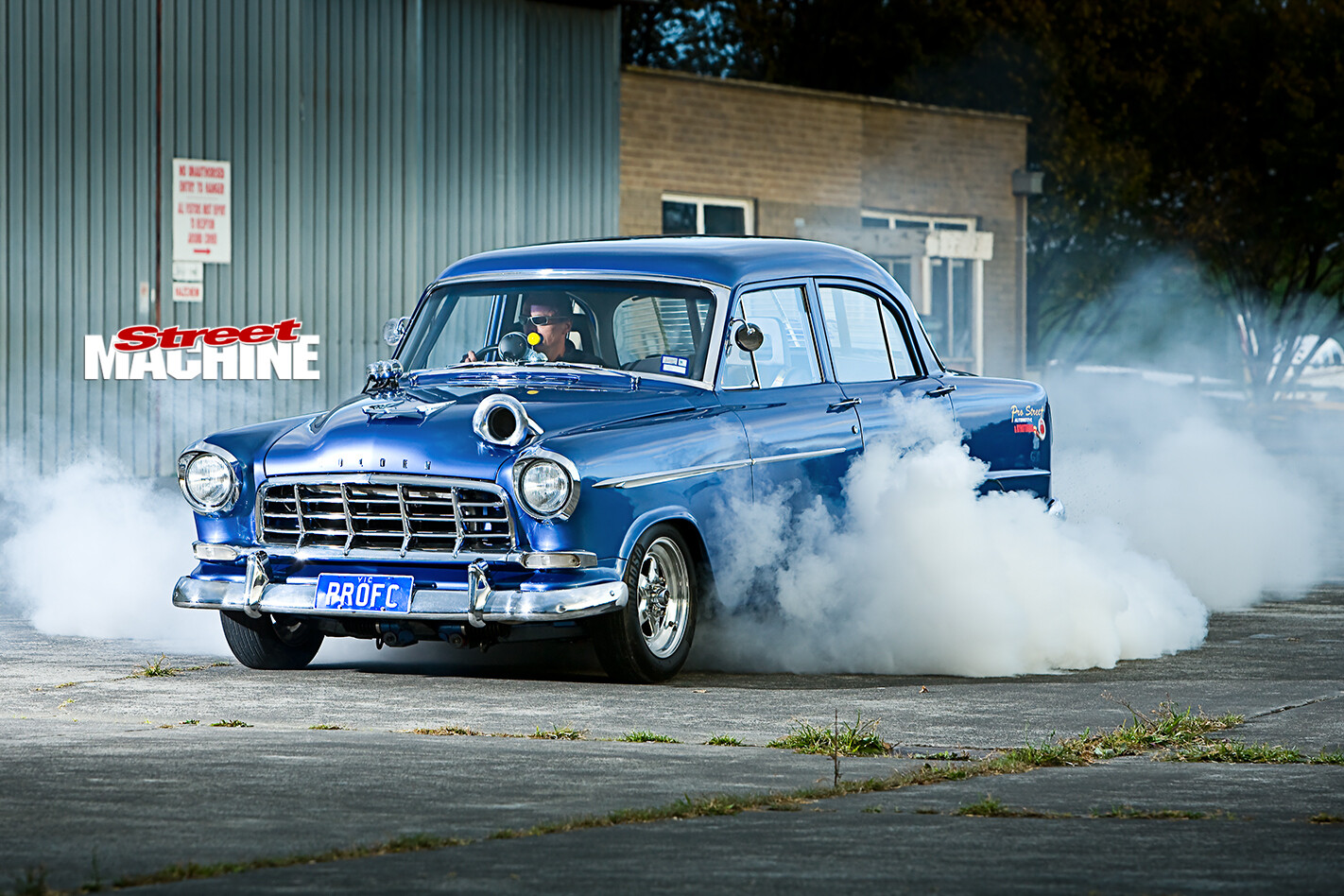 “It was painted with enamel house paint, two-tone green and white,” Paul says.
“It was painted with enamel house paint, two-tone green and white,” Paul says.
On apprentice wages, he didn’t have much cash to throw at it but he still managed to give the FC a proper coat of red and white. With fresh paint it was looking sharp — until he came out of a shopping centre and found his ride sitting crunched up in a loading dock.
“The handbrake cable snapped and off it went. It damaged the bumper, grille and the whole front end. It was a shock, especially after it was freshly painted.”
He had the car repaired but changed the course of the build before it went to paint.
“I just fell in love with the Pro Street look and decided to take it to Johnny Lang’s [Street & Strip Engineering] and that’s what I ended up with.”
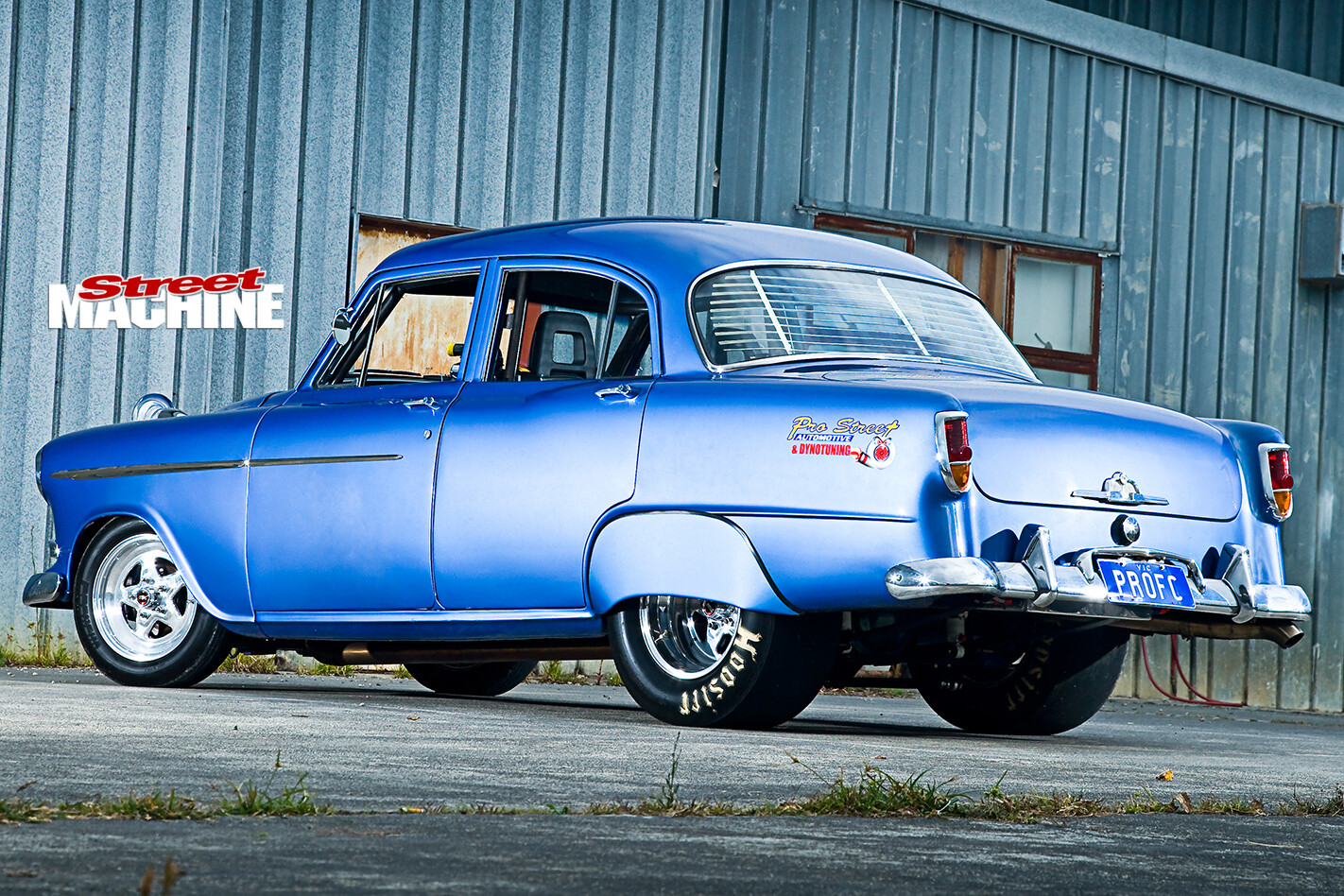 At Strip & Strip it copped a three-quarter chassis along with a set of tubs and a chrome-moly six-point ’cage. It was also fitted with a new floor and firewall along with a 28-spline nine-inch diff. The late 50s Holden still runs leaf springs in the rear but they’ve been moved inboard to clear the 10in-wide Weld rims. While Paul could fit a wider tyre under there, he doesn’t need it at the moment: “We put a bigger tub in,” he explains, “in case later on I wanted to fit ladder bars.”
At Strip & Strip it copped a three-quarter chassis along with a set of tubs and a chrome-moly six-point ’cage. It was also fitted with a new floor and firewall along with a 28-spline nine-inch diff. The late 50s Holden still runs leaf springs in the rear but they’ve been moved inboard to clear the 10in-wide Weld rims. While Paul could fit a wider tyre under there, he doesn’t need it at the moment: “We put a bigger tub in,” he explains, “in case later on I wanted to fit ladder bars.”
From there the FC went off to Ian Wilmott’s in Frankston, Vic, for a coat of Mauritius Blue, a hue more at home on BMWs, and many years later it looks as sweet as the day it rolled from the booth. “That paint work would be 15 or 16 years old,” Paul reckons.
With its body looking spiffy the FC needed power and Paul elected to treat the old 202 to a few extra herbs and spices. He found an old McGee mechanical injection set-up from a speedway car along with a heavily massaged high compression head that he used for his first high horsepower combo. Running naturally aspirated, through the Aussie four-speed and 5.86 gears in the diff, the FC was howling down the quarter in 12.96 seconds. Not bad for an old 202 but the 8800rpm redline was taking its toll.
“I used to turn it pretty hard — spinning hard and going nowhere,” he laughs. “It was unreliable. It used to vibrate apart. The flywheels would fall off, the balancers too, and the gearbox used to give me heaps of grief.”
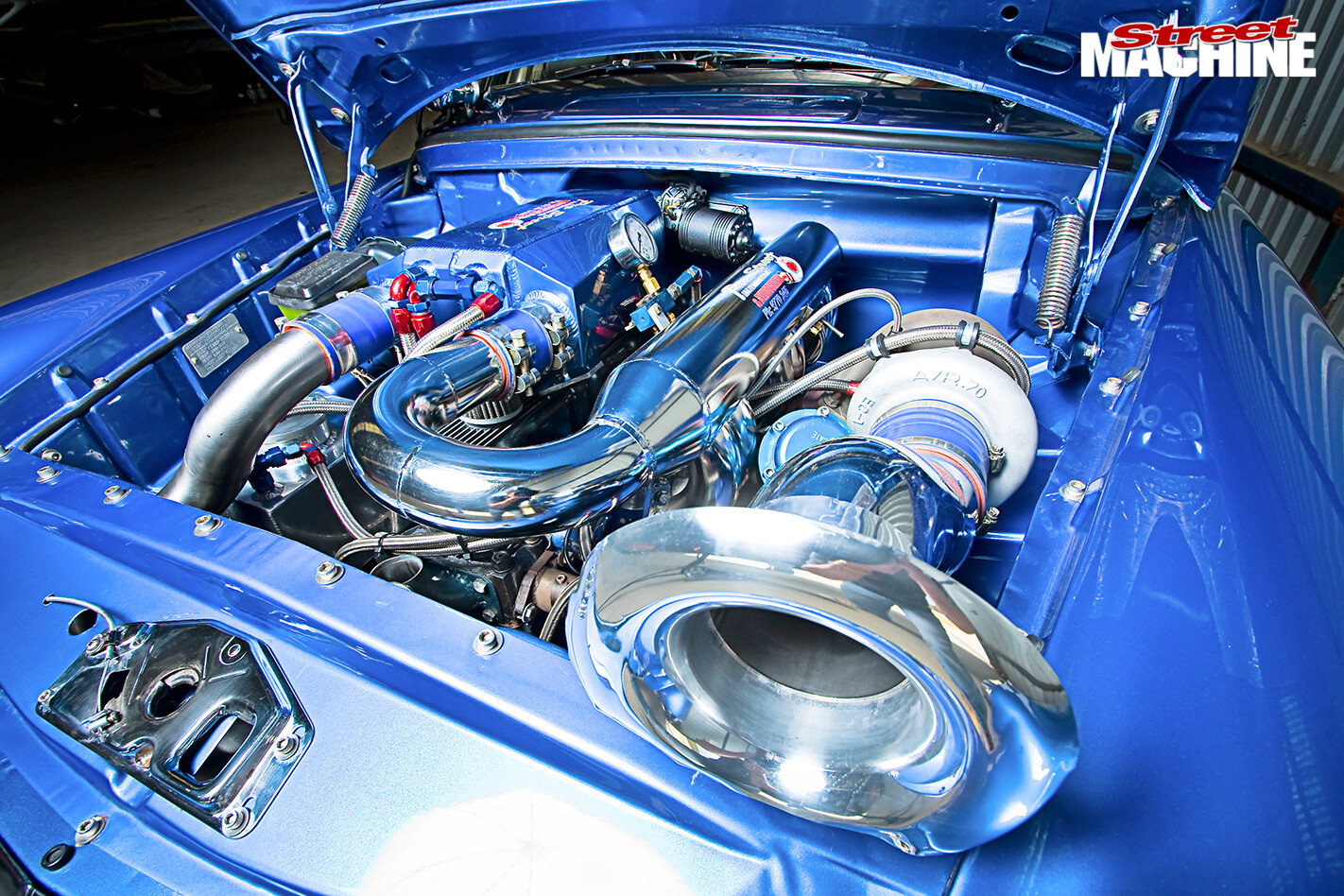 Despite running a close-ratio cluster from an XU1 and shotpeened internals, the Aussie four-speed couldn’t handle the power and the fast shifting action of the vertical gate shifter kept snapping input shafts.
Despite running a close-ratio cluster from an XU1 and shotpeened internals, the Aussie four-speed couldn’t handle the power and the fast shifting action of the vertical gate shifter kept snapping input shafts.
Adding giggle gas did nothing for the gearbox’s longevity but with a single Madden Nitrous fogger spraying an extra 150hp into the engine, the little 202 managed a best of 11.84@110mph.
As usual, life got in the way of plans, and with a growing family and young business — Pro Street Automotive — Paul parked the FC for a while before he was in a position to play again.
“Then I got renewed interest in it and added a turbo,” he says. “I had a T04 on it originally. It wasn’t too bad — it made just on 400hp — but the inlet temperatures were too high and I couldn’t get the boost out of it that I wanted.”
Switching to a GT35 with a T66 compressor certainly helped the boost issue but created a whole new problem: Paul started splitting engine blocks.
“We tried full grout and half grout but in the end a custom crank girdle helped tremendously.”
But it was a set of custom Darton sleeves from Dave Butcher at Frankston Engine Centre that really made the difference. “I was using what was available commonly and went through them pretty quickly. It would lock up the two centre cam bearings when I came on the transbrake because the block was twisting so much.”
The Darton sleeves solved that, and with a set of forged pistons hanging off BMW rods, the little six-pot is really cranking out the power.
With 30psi of boosted air, the 202 makes 555rwhp, which means this old red motor has to be cranking out at least 700 ponies. But it’s how it makes the power that’s really interesting. Surprisingly, it makes a mountain of torque. Paul only revs it to 5500rpm yet the FC has grunted its way down the quarter in just 9.75 seconds, posting 139mph over the line.
And Paul reckons there’s more to come. “Last time I took it out, its best 60ft time was a 1.44 but I’ve been playing around with auto oils to alter the converter and the difference is amazing. I let go of the transbrake and it picked the wheels up and nearly went into the wall, but it ran a 1.33 60-footer. If I’d have kept into it, it would have been a 9.50, no worries.”
But while going fast is always fun, Paul’s looking for some repeatability in the numbers. “I just want to try to get it consistent now, so I can go some rounds in dial-your-own. That’s basically it.”

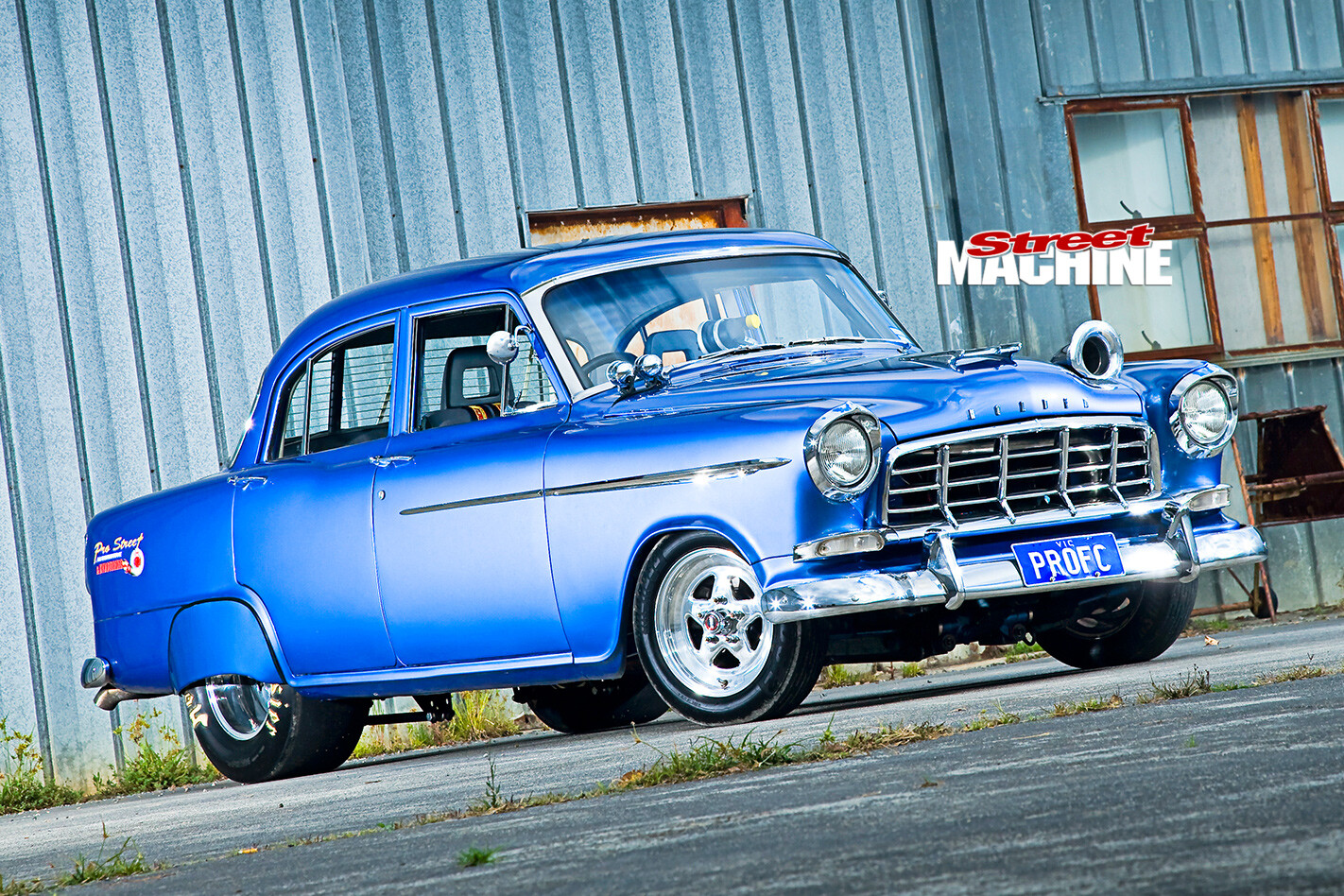
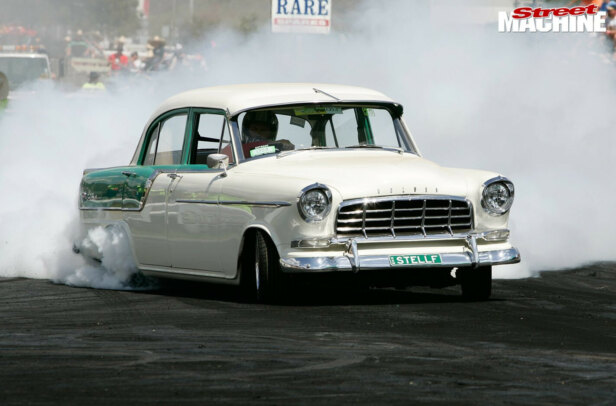
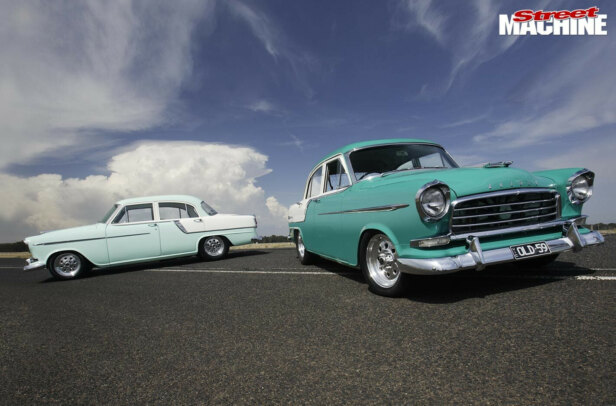
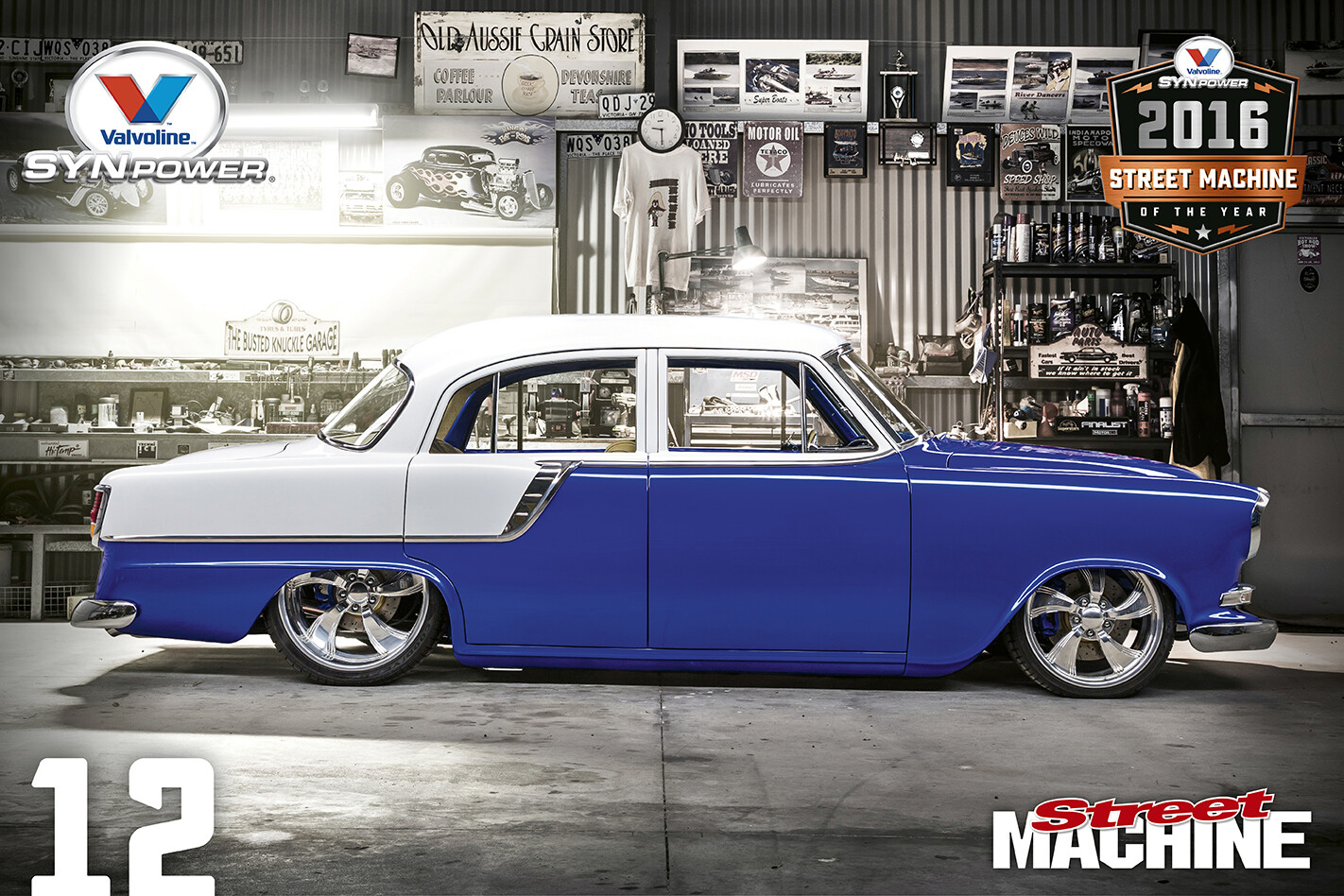
Comments